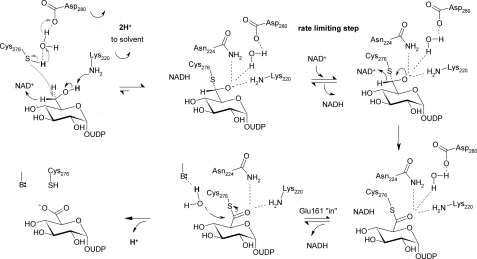SCHEME 2.
Proposed catalytic mechanism of hUGDH. See text for further explanations. Conversion of alcohol to (anionic) thiohemiacetal is thought to proceed through hydride transfer oxidation (black arrow) kinetically coupled to nucleophilic attack from deprotonated Cys276 (gray arrows). The indicated roles of Lys220 and water-bonded to Asp280 are tentative. Glu161 is the favored candidate catalytic base facilitating attack of water during thioester hydrolysis.

